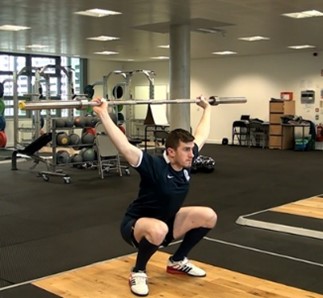Olympic lifts: benefit to players
With considerably more training time investment needed to achieve competency in the Olympic lifts compared to other resistance training exercises such as the Squat and Deadlift, it is often questioned whether the performance return from Olympic lifts is worth the investment?
Research has shown that Olympic lifts such as the Clean and Jerk and Snatch can generate some of the highest power outputs in resistance training exercises. This is because these exercises require an athlete to move heavy loads as quickly as possible, requiring a high level of explosive strength and power. This is one important reason for including these lifts as part of a resistance training programme. The explosive strength and power demands of the Clean and Jerk and the Snatch, may contribute to greater athletic power. As discussed previously explosive strength and power are key physical attributes for rugby. This viewpoint is supported in studies that have reported close relationships between Olympic lift performance and power measures. For example, Hoffman and colleagues in 2004 showed that an eight-week programme of Olympic lifting was superior to traditional power lifting in enhancing jumping power.
The triple extension action of the hips, knees, and ankles, that is common to running, jumping and other rugby specific actions like scrummaging and tackling, is also the main action of the Olympic lifts. Training this action transfers to enhanced performance. An explosive triple extension is key to lifting the bar into the overhead position for the Snatch or the catch position for the Clean. During Olympic lifts it may look like the athletes are pulling the bar over their head or up into the catch position with their arms doing a lot of the work, however, the triple extension of the hips, knees and ankles is the key factor in the vertical displacement of the bar and thus determines success.
Training in the Olympic lifts can also help players to develop and maintain mobility and flexibility in the joints and muscles involved. The Olympic lifts require excellent levels of both flexibility and mobility as demonstrated in figure 1.
Fig 1. Flexibility and mobility required for Olympic lifts.

Olympic lifting training itself can act as indirect mobility and flexibility training. The player may need some dedicated stretching and mobility drills to further develop the flexibility and mobility to fully execute the lift with technical proficiency, but by learning to perform the lifts, the player will be moving into challenging body positions and thus improving joint range of motion. In this module the focus will be on coaching the clean. The clean will provide the rugby player with a lot of the above benefits that will be useful for the rugby player. The clean is also generally easier than the snatch to learn and coach effectively.